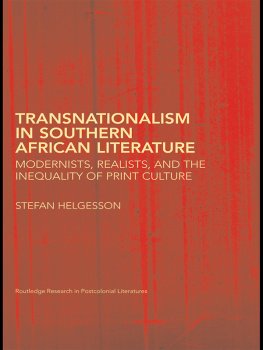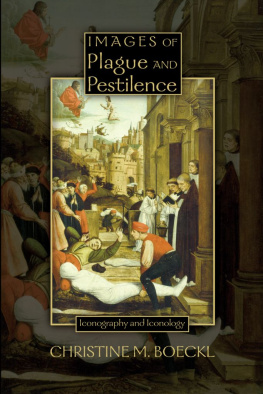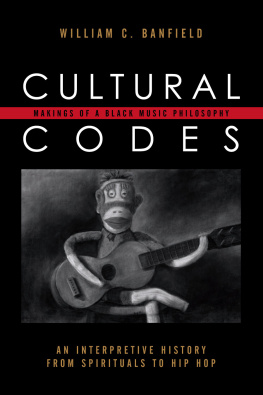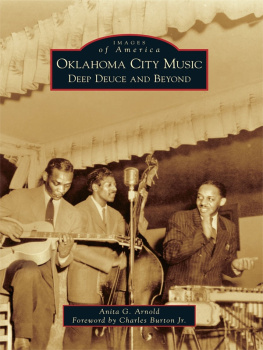Eileen Southern - Images: Iconography of Music in African-American Culture, 1770s-1920s
Here you can read online Eileen Southern - Images: Iconography of Music in African-American Culture, 1770s-1920s full text of the book (entire story) in english for free. Download pdf and epub, get meaning, cover and reviews about this ebook. year: 2000, publisher: TaylorFrancis, genre: Home and family. Description of the work, (preface) as well as reviews are available. Best literature library LitArk.com created for fans of good reading and offers a wide selection of genres:
Romance novel
Science fiction
Adventure
Detective
Science
History
Home and family
Prose
Art
Politics
Computer
Non-fiction
Religion
Business
Children
Humor
Choose a favorite category and find really read worthwhile books. Enjoy immersion in the world of imagination, feel the emotions of the characters or learn something new for yourself, make an fascinating discovery.
- Book:Images: Iconography of Music in African-American Culture, 1770s-1920s
- Author:
- Publisher:TaylorFrancis
- Genre:
- Year:2000
- Rating:4 / 5
- Favourites:Add to favourites
- Your mark:
- 80
- 1
- 2
- 3
- 4
- 5
Images: Iconography of Music in African-American Culture, 1770s-1920s: summary, description and annotation
We offer to read an annotation, description, summary or preface (depends on what the author of the book "Images: Iconography of Music in African-American Culture, 1770s-1920s" wrote himself). If you haven't found the necessary information about the book — write in the comments, we will try to find it.
Eileen Southern: author's other books
Who wrote Images: Iconography of Music in African-American Culture, 1770s-1920s? Find out the surname, the name of the author of the book and a list of all author's works by series.
Images: Iconography of Music in African-American Culture, 1770s-1920s — read online for free the complete book (whole text) full work
Below is the text of the book, divided by pages. System saving the place of the last page read, allows you to conveniently read the book "Images: Iconography of Music in African-American Culture, 1770s-1920s" online for free, without having to search again every time where you left off. Put a bookmark, and you can go to the page where you finished reading at any time.
Font size:
Interval:
Bookmark:

IMAGES
MUSIC IN AFRICAN-AMERICAN CULTURE
VOLUME 1
Garland Reference Library of the Humanities
Volume 2089
MUSIC IN AFRICAN-AMERICAN CULTURE
Josephine Wright, Series Editor
Professor of Music and The Josephine Lincoln Morris Professor of Black Studies
The College of Wooster
IMAGES
Iconography of Music in African-American Culture, 1770s1920s
by Eileen Southern and Josephine Wright
IMAGES
ICONOGRAPHY OF MUSIC IN AFRICAN-AMERICAN CULTURE, 1770S1920S
Eileen Southern and
Josephine Wright

First published 2000 by Garland Publishing, Inc.
Published 2018 by Routledge
2 Park Square, Milton Park, Abingdon, Oxon OX14 4RN
52 Vanderbilt Avenue, New York, NY 10017
Routledge is an imprint of the Taylor & Francis Group, an informa business
Copyright 2000 by Eileen Southern and Josephine Wright
All rights reserved. No part of this book may be reprinted or reproduced or utilised in any form or by any electronic, mechanical, or other means, now known or hereafter invented, including photocopying and recording, or in any information storage or retrieval system, without permission in writing from the publishers.
Notice:
Product or corporate names may be trademarks or registered trademarks, and are used only for identification and explanation without intent to infringe.
Library of Congress Cataloging-in-Publication Data
Southern, Eileen.
Images : iconography of music in African-American culture (1770s1920s) / by Eileen Southern and Josephine Wright.
p. cm (Music in African-American culture ; v. 1) (Garland reference library of the humanities ; vol.2089)
Includes bibliographical references (p. ) and indexes.
ISBN 0-8153-2875-3 (alk. paper)
1. Afro-AmericansMusicPictorial works. 2. Music in art. I. Wright, Josephine 1942. II. Title. III. Series. IV. Series: Garland reference library of the humanities ; vol. 2089
ML3556 .S738 2000
780.8996073dc21
00-029362
ISBN 13: 978-0-8153-2875-9 (hbk)
Contents
Music in African - American Culture
Josephine Wright
The music history of black America embraces a broad spectrum of musical styles, activities, and traditions, documented both in North America and abroad, at the earliest beginnings in the seventeenth century and continuing to the present day. These shared experiences help define African-Americans and their culture.
Volumes in this series will include monographs and edited collections of new essays that introduce recent research on all aspects of African-American music history, placing this rich and diverse heritage within a social, historical, and cultural context.
The iconography presented in this book was compiled under a grant from the National Endowment for the Humanities, with supportive funding from The College of Woosters Henry Luce Award for Distinguished Scholarship for payment of all permission fees.
A number of persons contributed significantly to this project over the past decade, and to all we are deeply indebted: professional photographers Kurt Muller, Lydia Dull, Rick Stafford, and Michael Nedweski took special care in making copies of our collections old prints and engravings; and Mary Katherine Donaldson, American art historian, served as secretary and computer researcher, and her secure knowledge provided a reliable guide through the sometimes treacherous water of music iconography. From time to time Harvard graduate students, particularly Lewis Porter and Christopher Johnson, joined the research team. From our colleagues in history, art history, and music history we received advice and encouragementespecially from the late Lorenzo Johnston Greene and Howard Mayer Brown, as well as from Sterling Stuckey, David Driskell, Sarah Burns, and John Ward. Many librarians, archivists, and audiovisual technicians helped us locate obscure sources and obtain photographic reproductions of artworks. In that regard, we wish to thank the personnel of the Boston Museum of Fine Arts, the Boston Public Library, the Cleveland Public Library, Harvard University Libraries, the Library of Congress, Oberlin College Libraries, the Moorland-Spingarn Research Center, the New York Public Library, and The College of Wooster.
It is only within the last two decades that scholars studying African-American slavery and its culture have begun to appreciate the importance of the primary documentation offered by the slaves traditional oral literature, music, and dance and by their written personal records, particularly the autobiographies. Now it is generally accepted that despite the oppressive rigors and brutality of slavery, the plantation infrastructure made possible, for most slaves at least, some small measure of freedom, at one time or another, from the surveillance of the slaveholder. During this time they were free to create their own social universe, in which they had control of important events in their lives, if only temporarily.
To gain access to that world, historians have relied on the usual sources available in the white community: plantation records; diaries, journals, and other personal documents; newspaper and magazine materials; imaginative literature; travelogues and more; and additionally of course the slave materials mentioned above. However, an important source of information apparently has been overlooked by researchers, and that is visual representation of the African-Americans cultural activities. Scholars reconstructing the historical past of slave culture seem not yet to recognize the value of using visual materials not just as illustrations for their texts or support for their theses, but also for the evidence contained in their subject matter.
In this book we propose to approach the subject matter from the perspective of a historian of the traditional performing arts (music, dance, and religious and secular oral literature), permitting the visual image to tell its own story and arriving at conclusions based on the information it provides, holding in special regard information confirmed by contemporaneous literary sources and/or oral tradition. In short, this is not a social history in pictures of black-American culture or a pictorial record of African-American achievement in the nineteenth century. Rather, it focuses on identifying, describing, and analyzing the cultural art forms and activities represented in the pictorial records that lie at the roots of African-American traditional culture. It is an iconography of black culture that includes photographic reproduction of the artworks on which it is based.
The idea for this project came to my colleague, Josephine Wright, and me more than a decade ago, while we were preparing for publication our work African-American Traditions in Song, Sermon, Tale, and Dance, 1600S1920: An Annotated Bibliography of Literature, Collections, and Artworks (published in 1990). Impressed by the number of illustrations we came across in contemporary magazines and books that depicted aspects of black culture, we decided to compile a collection of artworks to serve as a companion to the bibliography. But there had to be an ordering of the visual materials, an identification of a theme or themes, and the establishment of a basis for categorizing the pictures. Finally, we resolved to let the material itself determine its course: we would systematically collect genre pictures depicting African-American traditional culture in the nineteenth century, with the expectation that themes would emerge as our gatherings increased in number.
Next pageFont size:
Interval:
Bookmark:
Similar books «Images: Iconography of Music in African-American Culture, 1770s-1920s»
Look at similar books to Images: Iconography of Music in African-American Culture, 1770s-1920s. We have selected literature similar in name and meaning in the hope of providing readers with more options to find new, interesting, not yet read works.
Discussion, reviews of the book Images: Iconography of Music in African-American Culture, 1770s-1920s and just readers' own opinions. Leave your comments, write what you think about the work, its meaning or the main characters. Specify what exactly you liked and what you didn't like, and why you think so.







